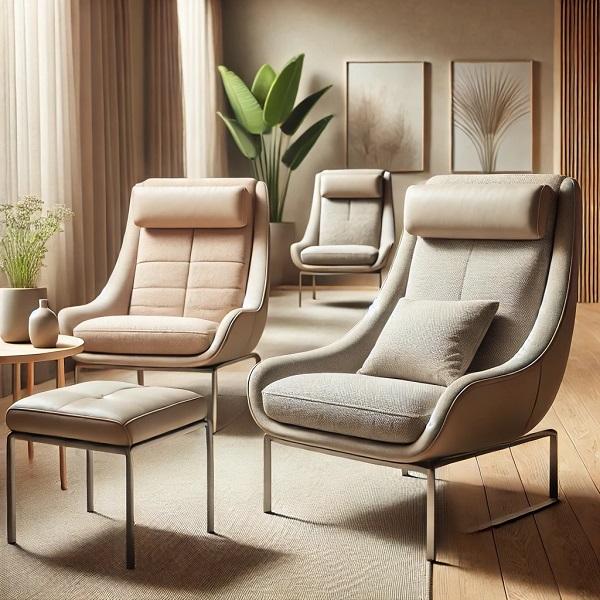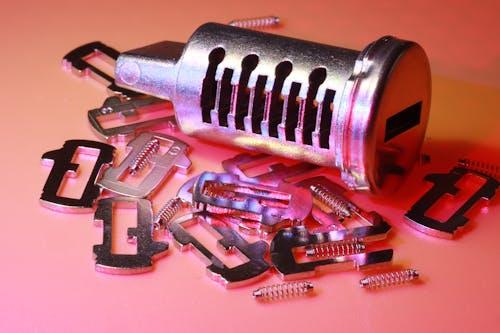A Comprehensive Guide to Different Types of Therapy Chairs

In therapeutic settings, the
choice of chair can profoundly impact the comfort and effectiveness of
sessions. With various types of therapy chairs available, it’s essential to
understand their distinct features and benefits to select the right one for your
practice. This comprehensive guide explores the different types of therapy
chairs, each designed to address specific needs and preferences in
therapeutic environments.
1. Ergonomic Therapy Chairs
Overview: Ergonomic therapy chairs are designed to provide
optimal support and comfort. They feature adjustable components to accommodate
various body types and preferences.
Key Features:
·
Adjustable seat height, depth, and backrest
angle
·
Lumbar support and contoured cushioning
·
Armrests that can be adjusted or removed
Benefits: These chairs promote healthy posture, reduce
strain on the body, and enhance overall comfort during extended therapy
sessions. They are ideal for settings where clients may spend long periods
seated.
2. Reclining Therapy Chairs
Overview: Reclining therapy chairs offer the ability to
adjust the backrest to a reclined position. This feature can be particularly
useful for relaxation and certain therapeutic techniques.
Key Features:
·
Adjustable backrest with multiple reclining
positions
·
Built-in footrests for added comfort
·
Some models include massage or heating functions
Benefits: Reclining chairs help clients relax and achieve a
more comfortable position for various therapeutic exercises or discussions.
They are beneficial for techniques that involve relaxation or guided imagery.
3. Massage Therapy Chairs
Overview: Massage therapy chairs are equipped with built-in
massage functions designed to alleviate tension and promote relaxation.
Key Features:
·
Multiple massage settings (e.g., kneading,
tapping, rolling)
·
Adjustable intensity and speed
·
Heating functions to enhance relaxation
Benefits: These chairs provide therapeutic massage to
relieve muscle tension and improve circulation. They are particularly useful
for clients who experience stress or physical discomfort and can complement
various therapeutic approaches.
4. Zero Gravity Therapy Chairs
Overview: Zero gravity therapy chairs are designed to
elevate the legs and position the body in a way that mimics a zero-gravity
environment.
Key Features:
·
Adjustable reclining and leg elevation
·
Reduced pressure on the spine and joints
·
Often includes built-in massage and heating
features
Benefits: The zero-gravity position helps distribute body
weight evenly and reduces pressure on the spine and joints. This position can
enhance relaxation and comfort, making it beneficial for clients with back pain
or circulatory issues.
5. Task Therapy Chairs
Overview: Task therapy chairs are designed for functionality
and support during various therapeutic activities, including cognitive and
behavioral interventions.
Key Features:
·
Adjustable height and tilt
·
Swivel base for mobility
·
Supportive backrest and seat
Benefits: Task
chairs are versatile and support a range of activities, from writing and
drawing to interactive exercises. Their adjustable features and mobility make
them suitable for dynamic therapy settings.
6. Bean Bag Therapy Chairs
Overview: Bean bag therapy chairs offer a relaxed and
informal seating option that molds to the body’s shape.
Key Features:
·
Soft, flexible material that conforms to the
body
·
Lightweight and portable
·
Often used in informal or creative therapy
settings
Benefits: Bean bag chairs provide a casual and comfortable
seating option that can promote a relaxed atmosphere. They are useful in
settings where a less formal approach is preferred, such as play therapy or
creative sessions.
7. Recliner Therapy Chairs
Overview: Recliner therapy chairs are designed for deep
relaxation and comfort, with the ability to recline fully and include
additional features for enhanced comfort.
Key Features:
·
Multiple reclining positions, including full
recline
·
Built-in footrests and armrests
·
Plush cushioning for maximum comfort
Benefits: Recliner chairs offer a high level of comfort and
are ideal for clients who benefit from a more relaxed seating position. They
are often used in settings where relaxation and comfort are key components of
the therapeutic process.
Conclusion
Choosing the right therapy chair can significantly impact
the comfort and effectiveness of therapeutic sessions. Understanding the
different types of therapy chairs—from ergonomic and reclining to massage and
bean bag options—allows practitioners to select chairs that best meet the needs
of their clients and therapeutic goals. By investing in the appropriate chair,
therapists can create a supportive and comfortable environment that enhances
the overall therapeutic experience.










Comments